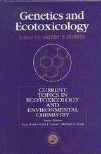Papers in the Biological Sciences

Valery Forbes Publications
Document Type
Article
Date of this Version
7-1999
Abstract
The toxic effects of the widespread polycyclic aromatic hydrocarbon (PAH), fluoranthene (FLU), on Life-history traits of Capitella sp. M as a function of population density were investigated in a life-table-response-experiment (LTRE) lasting 134 d. Animals from laboratory cultures were exposed to 6 different FLU concentrations (range 0 to 80 μg FLU [g dry wt sed]–1, ppm) at 3 population densities (range 529 to 36 842 worms m–2), and survivorship, growth rate until maturity, and reproductive parameters were recorded. Fluoranthene exposure significantly reduced juvenile survivorship in a concentration- dependent manner, whereas population density had no effect on this trait. In contrast, increasing density (= food limitation) was associated with significant decreases in body size at maturity and increased time to maturity, while FLU had no effect on these traits. Effects of FLU on time to first reproduction, % reproducing females, larvae per brood, broods per female, and population growth rate (λ) varied in response to the intensity of density dependence. In general, interactions between FLU and density were compensatory (antagonistic) at low toxicant exposures, but synergistic at the highest. Population effects are summarised by effects on population growth rate. Our main result is that at low concentrations of FLU (0 to 40 ppm), increasing density alleviated FLU'S effects on λ. Thus increasing FLU decreased λ at low density but had no effect at high density. At the highest concentrations of FLU, however, the reverse was the case ('synergistic effects'). Here, the effect of increasing density is to exacerbate the effects of FLU. This result is particularly important because it demonstrates that LTREs carried out at low density (non-food limited), as most have been in the past, may seriously underestimate effects in the field, where densities are generally high and likely to produce food limitation, as here. Our results suggest that when food availability is limiting, the impact of low levels of toxicant stress on population dynamics may be marginal. By contrast at higher toxicant exposures, food limitation exacerbates toxicant effects and may increase the likelihood of extinction.


Comments
Published in MARINE ECOLOGY PROGRESS SERIES 184 (July 26, 1999), pp. 139-148. Copyright 1999 Inter-Research. Used by permission.